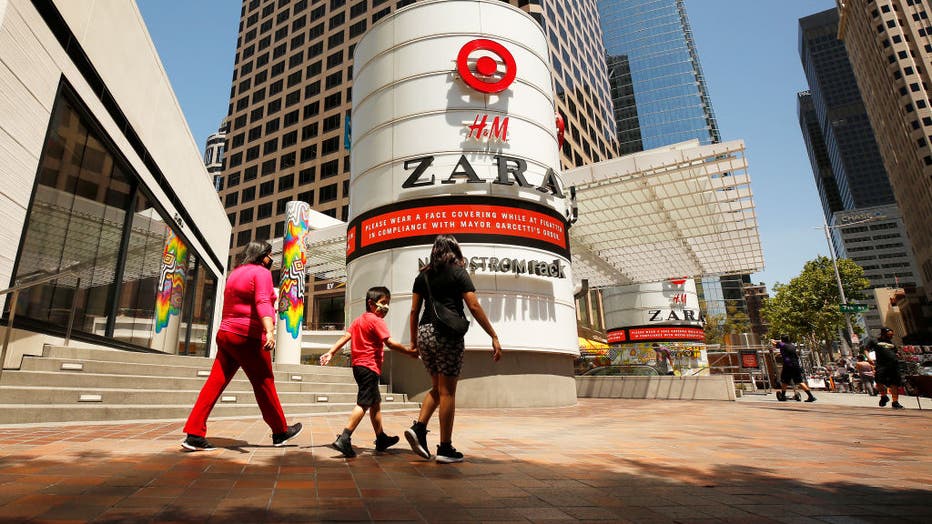Gov. Newsom announces modifications for more industries including dine-in service at restaurants

Newsom sets guidelines for dine-in restaurants
Restaurant owners now know what guidelines they must abide by after Gov. Gavin Newsom announced dine-in service guidelines Tuesday.
SACRAMENTO, Calif. - Without a concrete date for California eateries to offer dine-in service again, Gov. Gavin Newsom announced modifications for restaurants Tuesday.
It became clear that once patrons are able to dine-in, things will be different and part of the "new normal" amid the coronavirus crisis.
The governor also announced modifications to more industries in the second stage of the state's reopening plan, including outdoor museums, malls, and office-based workplaces where remote work was not possible.
Statewide, other industries such as hair and nail salons, gyms and fitness centers, remain shut out.
Other industries that are able to reopen with restrictions include manufacturing industries, logistics industries supporting retail, along with Stage 1 sectors.
Newsom specified that malls and retail stores would be open for pick-up services only.

(Getty Images)
Before announcing the guidelines, Newsom said more than one million Californians have tested for the virus and that the state continues to increase testing sites in rural and remote areas.
Newsom also cautioned that it is up to individual counties to decide how far they can go into the second stage, noting Los Angeles and San Francisco must opt for a slower approach to reopening its economies until the virus is under control.
For now, Butte and El Dorado counties are the only ones approved to reopen further into Stage Two.
According to the state's COVID-19 website, the following guidelines are in place for dine-in restaurants, brewpubs, craft distilleries, breweries, bars, pubs and wineries:
• Brewpubs, breweries, bars, pubs, craft distilleries, and wineries should remain closed until those establishments are allowed to resume modified or full operation unless they are offering sit-down, dine-in meals. Alcohol can only be sold in the same transaction as a meal.
• Dine-in restaurants, brewpubs, breweries, bars, pubs, craft distilleries, and wineries that provide sit-down meals should follow the restaurant guidance below and should continue to encourage takeout and delivery service whenever possible.
• Brewpubs, breweries, bars, pubs, craft distilleries, and wineries that do not provide sit-down meals themselves, but can contract with another vendor to do so, can serve dine-in meals provided both businesses follow the guidance below and alcohol is only sold in the same transaction as a meal.
• Venues that are currently authorized to provide off sale beer, wine, and spirits to be consumed off premises and do not offer sit-down, dine-in meals should follow the guidance for retail operations and offer curbside sales only, until local and/or statewide rules allow additional retail activity.
• Producers of beer, wine, and spirits should follow the guidance for manufacturing operations
• This guidance is not intended for concert, performance, or entertainment venues. Those types of establishments should remain closed until they are allowed to resume modified or full operation through a specific reopening order or guidance. Establishments that serve full meals must discontinue this type of entertainment until these types of activities are allowed to resume modified or full operation.
The document also indicates restaurants must implement other policies such as having a workplace-specific plan, cleaning and disinfectant protocols, and physical distancing guidelines.
RELATED: Stay up to date on all coronavirus-related information
While some industries were able to reopen with restrictions, others were excluded. This includes tattoo parlors, moving theatres, gaming facilities, community centers, concert venues, public pools, and religious services and cultural ceremonies.
Offering dine-in services is part of the second stage of California’s Four Stage reopening plan.
The state entered the second phase last Friday when some retailers, such as florists, clothing stores, bookstores and toy stores were allowed to reopen. However, for curbside pick-up services only.

Why social distancing can save lives amid COVID-19 pandemic
Social distancing is not only about preventing the illness itself, but rather, slowing the rate at which people get sick.
Two weeks ago, Newsom and California Director of Public Health, Dr. Sonia Angell, detailed what the Four Stages of reopening entail. Those four stages are:
Stage One: Safety and Preparedness
Stage One involves making an essential workplace environment possible as officials continue to build out testing, contact tracing, making sure PPE is more widely available, and being prepared for a potential hospital surge capacity.
This includes
• Physical workflow and adaption;
• Having an essential workforce safety net;
• Individual behavior changes, such as physical distancing that is crucial in staying hope and lowering one’s risk of contracting the coronavirus.
Stage Two: Lower Risk Workplaces
Stage Two involves gradually opening some lower-risk workplaces with modifications.
This includes:
• Retail businesses
• Manufacturing companies
• Allowing a broader workforce to return to work
• Opening offices when telework is not possible
• Opening more public spaces such as trails and parks
Stage Three: Highest Risk Workplaces
The third phase of reopening California’s businesses is opening higher risk environments with modifications to the size of gatherings.
This creates an opportunity for high-risk sectors to adapt and re-open.
Businesses such as nail salons, gyms and barbershops fall under this category where the proximity between individuals is closer.
It also includes the reopening of in-person religious services such as churches, weddings and memorial services.
Dr. Angell said it’s imperative that "people don’t put themselves at risk."
Stage Four: End of Stay-at-Home Order
The fourth and final stage is the return to the expanded workforce in high-risk workplaces, such as concerts and sporting events.
Get breaking news alerts in the FOX 11 News app. Download for iOS or Android.


